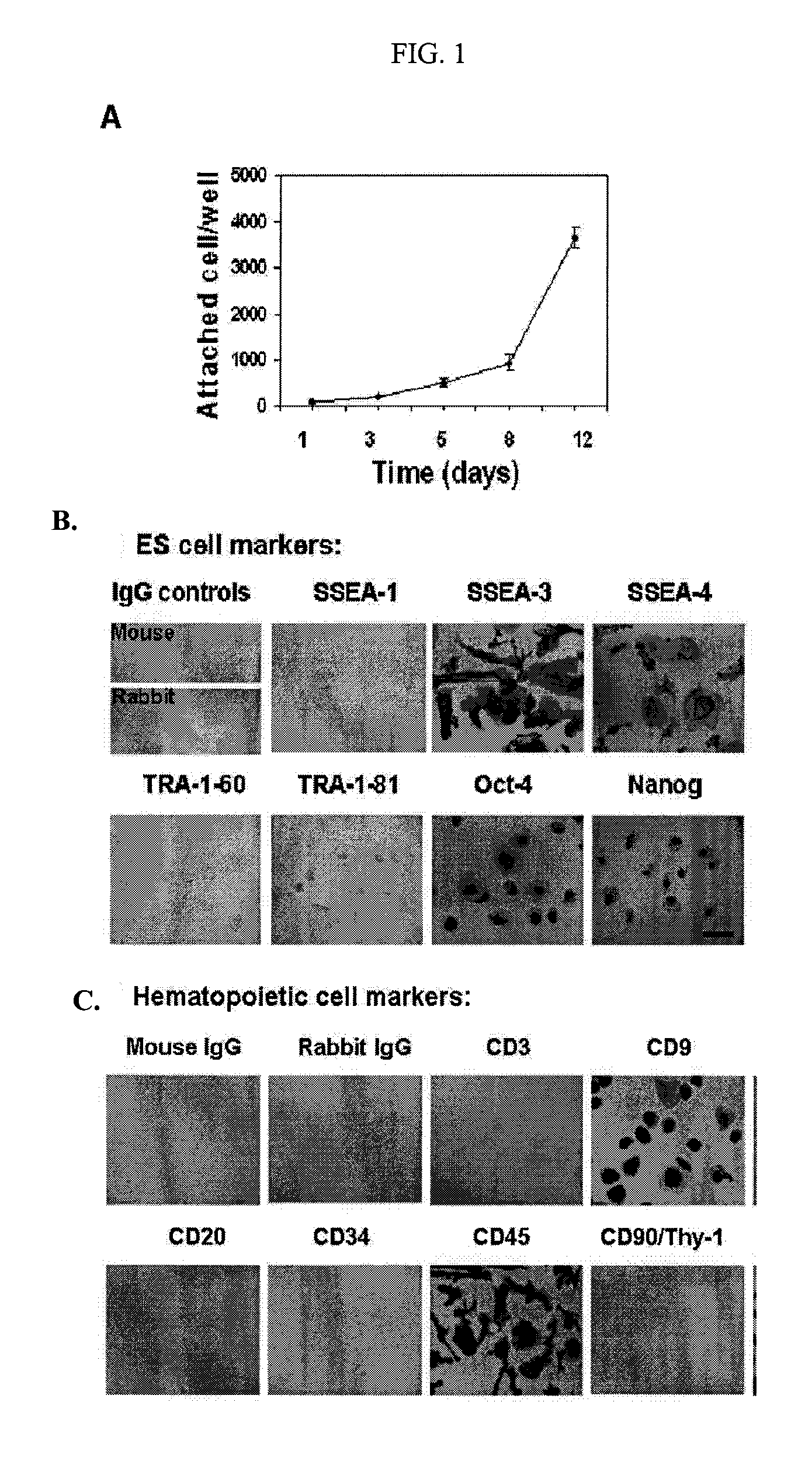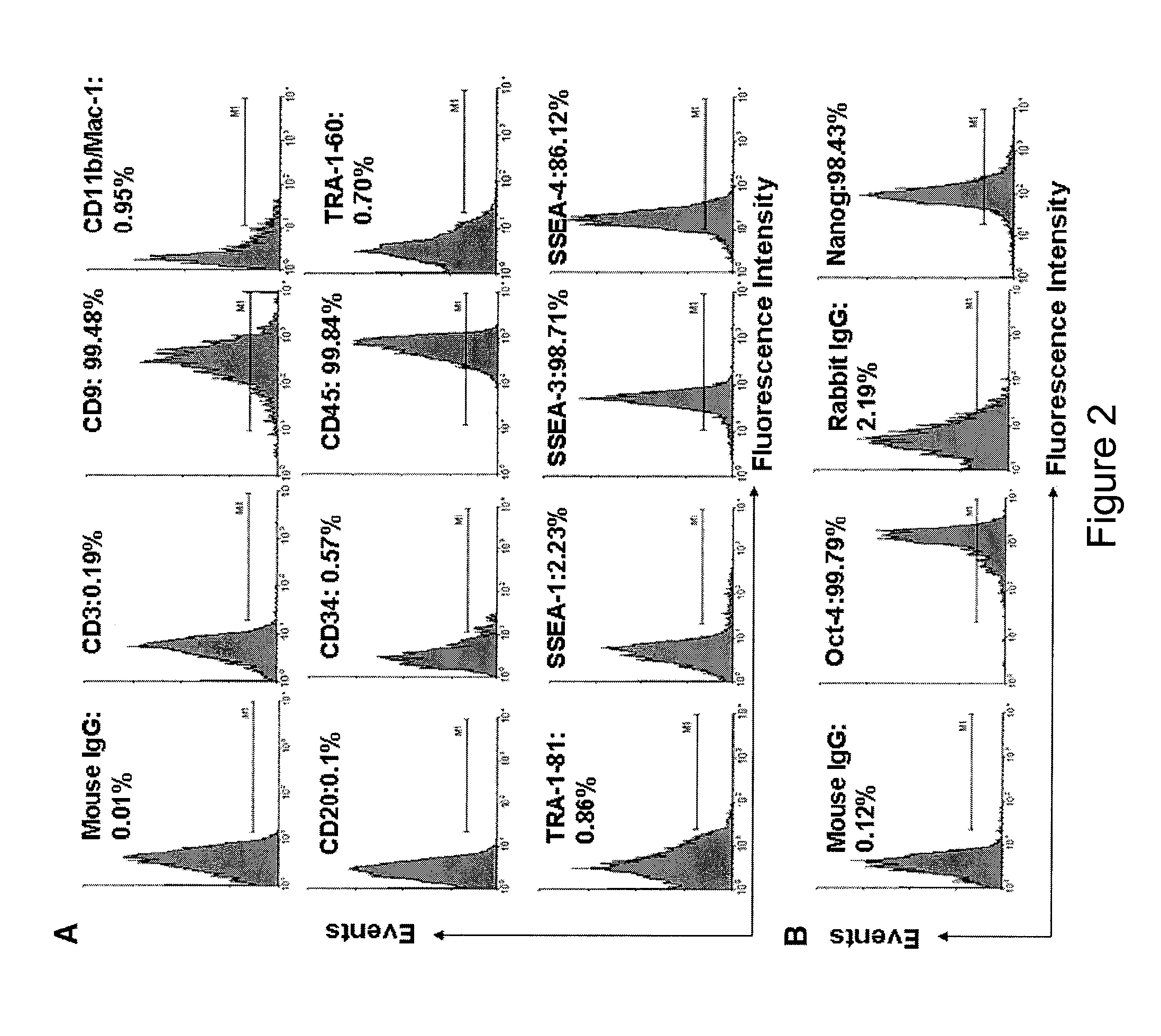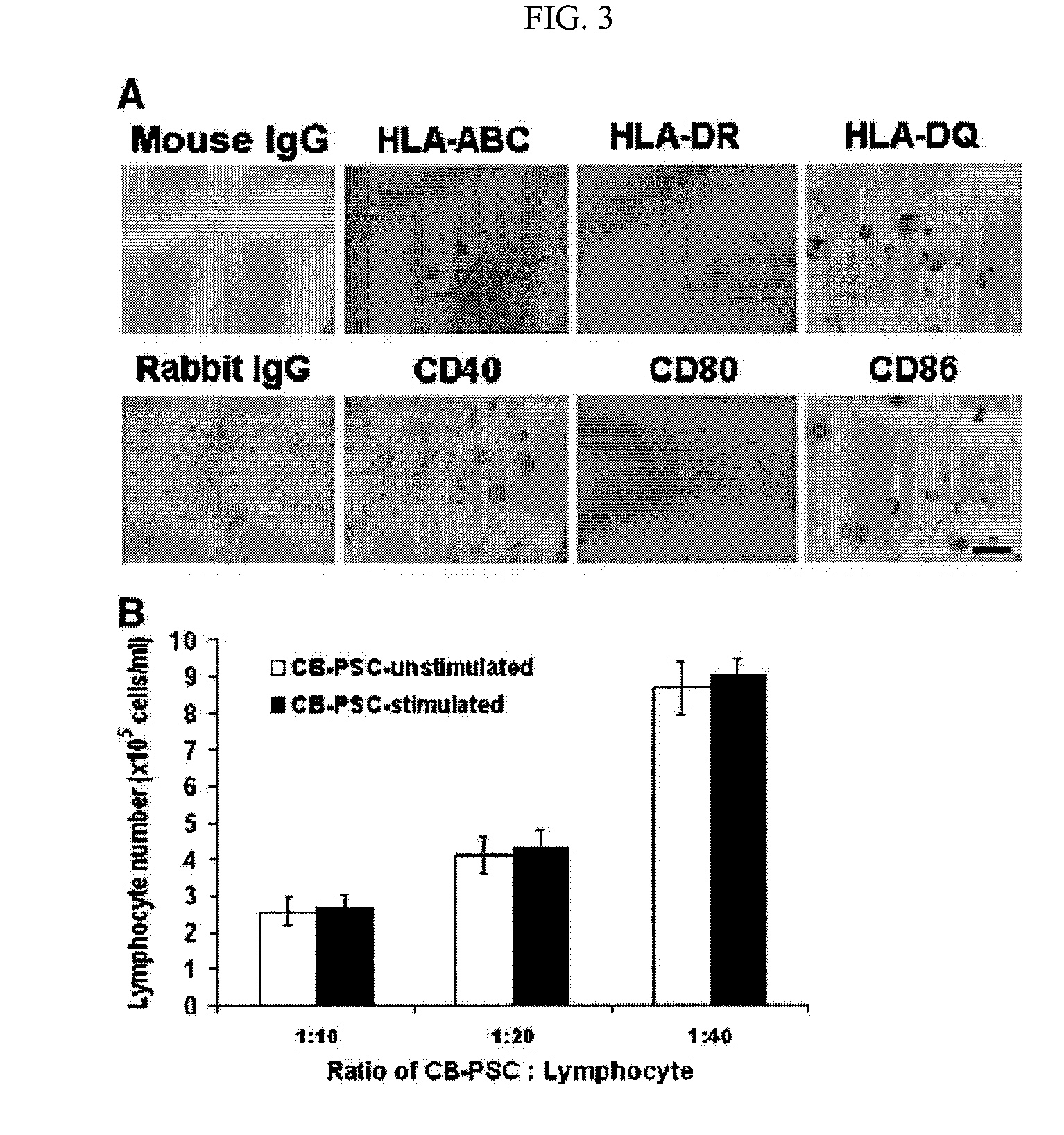Isolated Embryonic-Like Stem Cells Derived From Human Umbilical Cord Blood
a technology of stem cells and umbilical cord blood, which is applied in the field of embryonic-like stem cells isolated from human umbilical cord blood, can solve the problems of limited availability and practical usefulness of es cells, scarcity of previously-described cell population, and complexity of required technologies, etc., and achieves low immunogenicity, simple technology, and the effect of proliferation
- Summary
- Abstract
- Description
- Claims
- Application Information
AI Technical Summary
Benefits of technology
Problems solved by technology
Method used
Image
Examples
example 1
Isolation of Cord Blood-Stem Cells (CB-SC) from Human Umbilical Cord Blood and Cell Culture
Cell Culture
[0141]Human umbilical cord blood samples (50-100 ml / unit) were obtained from healthy donors (Life-Source Blood Services, Glenview, Ill.). Mononuclear cells were isolated using Ficoll-Hypaque (γ=1.077, Sigma), followed by removing red blood cells using Red Blood Cell Lysis buffer (eBioscience, San Diego, Calif.). Mononuclear cells were seeded into 8-Well Lab-Tek II Chamber Slides (Fisher Scientific) at 1-2×105 cells / ml, 0.5 ml / well in RPMI 1640 medium supplemented with 7% fetal bovine serum (Invitrogen, Carlsbad, Calif.), and incubated at 37° C., 8% CO2 conditions. Cells at 70-80% confluence were passaged every 5-7 days with the fresh RPMI 1640 medium supplemented with 7% fetal bovine serum at ratio 1:2. To expand cells on a large scale, mononuclear cells were initially seeded in 150×15 mm Petri dishes (Becton Dickinson Labware, Franklin Lakes, N.J.) at 1×106 cells / ml, 25 ml / dish in...
example 2
[0144]Immunostaining was performed as previously described with minor modifications [Y. Zhao, T. Mazzone, Human umbilical cord blood-derived f-macrophages retain pluripotentiality after thrombopoietin expansion, Exp Cell Res. 310 (2005) 311-318]. The cells were incubated for 20 minutes at room temperature with ImmunoPure Peroxidase Suppressor (Pierce, Rockford, Ill.) to block endogenous perioxidase activity. For fluorescence-labeled immunostaining, this step was omitted. After incubation with primary antibodies, cells were stained with ABC kit (Vector Laboratories, Burlingame, Calif.). Immunostaining was performed using the following antibodies: mouse anti-human monoclonal antibodies CD3, CD9, CD11b / Mac-1 (Clone ICRF44), CD20, CD34 (clone 563), R-PE-conjugated mouse anti-human CD34 monoclonal antibody (clone 563), CD45 (HI30), FITC-conjugated mouse anti-human CD45 monoclonal antibody (HI30), CD146 (Clone P1H12), human leukocyte antigen (HLA)-DR, HLA-DQ, isotype-matche...
example 3
Flow Analysis
[0146]For intracellular staining, cells were fixed with 4% paraformaldehyde for 20 min and then permeabilized with 0.5% Triton X-100 (Sigma) for 5-6 min at room temperature. For cell surface staining, the fixation and permeabilization steps were omitted. Cells were incubated with 2.5% horse serum (Vector Laboratories) at room temperature to block non-specific staining. Cells were incubated with primary antibodies for 45 min at 4° C. and then washed with cold PBS. Cells were stained with FITC-conjugated second antibodies for another 45 min at 4° C. and followed by flow analysis. Isotype-matched mouse IgG1κ antibody or normal rabbit IgG served as negative controls. After staining, cells were analyzed using a Beckman-Coulter Elite ESP.
[0147]Cells cultured in Petri dishes were washed with PBS and then solubilized with RIPA buffer (150 mM NaCl, 1.0% NP-40, 0.5% DOC, 0.1% SDS, 50 mM Tris (PH 8.0)) with a cocktail of protease inhibitors (Sigma). After forcing throu...
PUM
 Login to View More
Login to View More Abstract
Description
Claims
Application Information
 Login to View More
Login to View More - R&D
- Intellectual Property
- Life Sciences
- Materials
- Tech Scout
- Unparalleled Data Quality
- Higher Quality Content
- 60% Fewer Hallucinations
Browse by: Latest US Patents, China's latest patents, Technical Efficacy Thesaurus, Application Domain, Technology Topic, Popular Technical Reports.
© 2025 PatSnap. All rights reserved.Legal|Privacy policy|Modern Slavery Act Transparency Statement|Sitemap|About US| Contact US: help@patsnap.com



